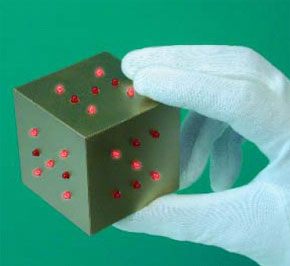Rolling Dice
Three-dimensional electronics

This is a MEMBER ONLY article. You need a subscription to read this article.
- Unlimited access to online Member Only articles
- 3 new editions Elektor Magazine (digital)
- More than 5000 Gerber files
- 20% member discount on e-books (at elektor.com)
- 10% member discount on Products (at elektor.com)
Available from €5.33 per month.
What is Members Only
Elektor is committed to providing high-quality content on electronics, catering to tens of thousands of paying members. As part of this commitment, Elektor has launched Premium, an initiative that offers exclusive online articles to members sometimes even before they appear in the magazine.
Every day, members can access in-depth articles that showcase the best of Elektor's premium content.
This initiative aims to reward members with early access. Once logged in, members can easily enjoy this exclusive content and engage in discussions about featured projects. While Premium adds to the existing resources available, Elektor will continue to provide a wealth of free information.
Join the Elektor community today to take advantage of Premium and other benefits!
Materials
Gerber file
CAM/CAD data for the PCB referred to in this article is available as a Gerber file. Elektor GREEN and GOLD members can exclusively download these files for free as part of their membership. Gerber files allow a PCB to be produced on an appropriate device available locally, or through an online PCB manufacturing service.
Elektor recommends the Elektor PCB Service service from its business partner Eurocircuits or AISLER as the best services for its own prototypes and volume production.
The use of our Gerber files is provided under a modified Creative Commons license. Creative Commons offers authors, scientists, educators and other creatives the freedom to handle their copyright in a more free way without losing their ownership.
Component list
R1-R7 = 1kOhm 5 SMD
R8,R9 = 10kOhm SMD
R10 = 1kOhm SMD
R11 = 100kOhm SMD
Capacitors:
C1,C2 = 22pF
C3,C4 = 100nF SMD
C5 = 10µ F 16V radial
Semiconductors:
D1-D7 = LED, 3mm, red, low-current
IC1 = AT89C2051-12PI, programmed, order code 040248-41
IC2 = 78L05
T1 = BCP28 (Conrad Electronics # 153225-8B)
T2 = BC547B
Miscellaneous:
X1 = 4MHz quartz crystal
S1 = mercury switch (Farnell # 178-338)
9-V battery with clip-on lead
20-way IC socket
ABS (hard plastic) angle section
2 M3 screws (countersunk head)
Components List PCB # 2 through # 6
(per board)
Resistors:
R1-R7 = 1kOhm 5 SMD
Capacitors:
C1 = 100nF SMD
Semiconductors:
D1-D7 = LED, 3mm, red, low-current
IC1 = 74HCT4094
Miscellaneous:
16-way IC socket
S1 = switch type DTS61K (only on board # 2)
PCB, order code 040248-1 (contains six sections for a complete dice)
Disk, source and hex code files, order code 040248-11 or Free Download



Discussion (0 comments)